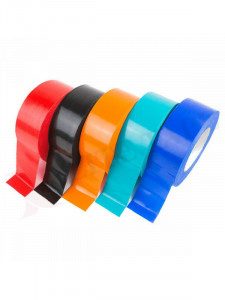Weather Stripping The Essential Door Seal Strip for Energy Efficiency
When it comes to maintaining a comfortable and energy-efficient home, one of the most overlooked factors is the quality of the doors and their seals. Weather stripping, also known as door seal strips, plays a crucial role in preventing air leaks around doors, ensuring that your home remains cozy during winter and cool during summer. This article will delve into what weather stripping is, its various types, installation methods, and the significant benefits it brings to energy efficiency and comfort in your living space.
What is Weather Stripping?
Weather stripping refers to the materials applied to the edges of doors and windows to seal gaps and cracks that allow air to penetrate your home. It is designed to create a barrier that prevents air loss, helping to maintain the internal temperature of your home. The importance of weather stripping cannot be understated, as it contributes directly to the energy efficiency of your home and can significantly reduce heating and cooling costs.
Types of Weather Stripping
There are several types of weather stripping materials, each suited for different applications and performance requirements. Some of the most common types include
1. V-Strip This type of weather stripping consists of flexible plastic or metal and is shaped like a V. It expands and contracts to fill gaps when a door or window closes. It is ideal for sealing gaps along the top and sides of doors.
2. Felt Weather Stripping Made of compressed fibers, felt weather stripping is cost-effective and easy to install. However, it may not last as long as other materials and is best used in low-traffic areas.
3. Rubber and Vinyl Weather Stripping These materials are highly effective at sealing out air and moisture. They are commonly used for exterior doors and tend to be durable and watertight, making them excellent for year-round protection.
4. Door Sweeps A type of weather stripping specifically designed for the bottom of doors, door sweeps are often made of rubber or bristles. They seal off gaps and prevent drafts and pests from entering.
5. Self-Adhesive Strips Many weather stripping options come with adhesive backing for easy installation. These are often made of vinyl or foam and are suitable for a variety of surfaces.
Installing Weather Stripping
weather stripping door seal strip

Installing weather stripping is a straightforward DIY task that can significantly improve your home’s energy efficiency. Here are some basic steps
1. Measure the Gaps Identify the gaps around your doors or windows by performing a simple smoke test—light an incense stick and observe the smoke. If the smoke drifts, there is an air leak.
2. Select the Right Weather Stripping Choose a weather stripping material that suits your needs based on the size of the gaps and the environment.
3. Prepare the Surface Clean the area where you will apply the weather stripping to ensure a good seal. Remove any old weather stripping remnants.
4. Cut and Apply Cut the weather stripping to the appropriate length and follow the manufacturer’s instructions for application. For self-adhesive types, press firmly to ensure a secure bond.
5. Test the Seal After installation, perform another smoke test to check for any remaining air leaks. Adjust or add more weather stripping as necessary.
Benefits of Weather Stripping
The benefits of weather stripping extend beyond simple comfort. First and foremost, it greatly enhances energy efficiency by reducing heating and cooling costs. By preventing unwanted drafts, you can lower your energy bills and reduce wear and tear on your HVAC system.
Additionally, effective weather stripping improves indoor air quality by keeping out dust, pollen, and moisture. This is particularly important for individuals with allergies or respiratory issues.
Moreover, properly sealed doors and windows contribute to noise reduction, creating a quieter home environment by blocking out external sounds.
In conclusion, weather stripping is an inexpensive yet highly effective solution for enhancing the comfort and energy efficiency of your home. By investing time and resources into this simple home improvement task, you can enjoy a warmer winter, a cooler summer, and a more cost-effective living experience. Don’t overlook this essential element of home maintenance; weather stripping is a small change that leads to significant benefits.
-
XIANGFAN Rubber Tape-Ultimate Solutions for All Your Insulation NeedsNewsJun.24,2025
-
XIANGFAN Rubber Tape-Protection for Industrial and Residential ApplicationsNewsJun.24,2025
-
XIANGFAN Rubber Tape: Superior Safety and Sealing for Demanding EnvironmentsNewsJun.24,2025
-
XIANGFAN Rubber Tape: Reliable Solutions for Every Electrical ChallengeNewsJun.24,2025
-
XIANGFAN Electrical & Industrial Tape: Powering Reliability Across IndustriesNewsJun.24,2025
-
XIANGFAN Electrical & Industrial Tape: Excellence in Every ApplicationNewsJun.24,2025
